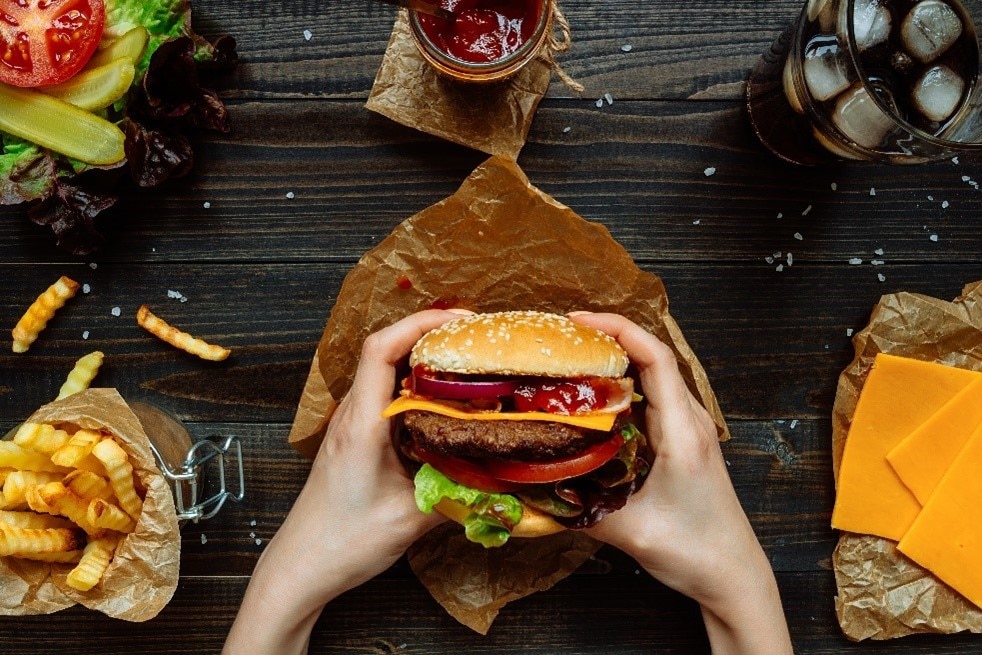
Innovative starter cultures that unlock exceptional taste, texture, and consistency
Creating Industry-Leading Cheddar Cheese with CHOOZIT® VINTAGE

The cheese category has grown by 19% since 2017, with cheddar being the most favored cheese type among consumers.1 However, cheddar cheese manufacturers are currently facing a range of obstacles, from maintaining quality and flexibility in production to creating great-tasting products consumers love.
At IFF, we’ve harnessed our advanced dairy capabilities and technical expertise to create CHOOZIT® VINTAGE, a line of starter cultures specifically tailored to address cheddar manufacturers’ key challenges. These cultures deliver a consistently well-balanced flavor profile, ensuring a smooth, clean-cut texture without any bitterness or crumbliness across cheese batches throughout the ripening process.
With CHOOZIT® VINTAGE, we can help manufacturers attain consistent cheese composition from one day to the next, optimize texture for conversion, elevate taste, and avoid flavor defects--all while meeting their sustainability targets.
In this article, our experts answer the most frequently asked questions from cheesemakers and explain how CHOOZIT® VINTAGE can help brands thrive in the market with high-performing, differentiated cheese products.
Q1. Will CHOOZIT® VINTAGE achieve the same critical control pH targets in my current process?
The lactic acid bacteria strains in CHOOZIT® VINTAGE were formulated to acidify at a precise rate and time during the production process. The formula was developed based on our deep understanding of modern cheddar manufacturing processes and was validated across various recipes, including fast industrial production in concentrated milk and slower traditional production in conventional milk. IFF’s application specialists can collaborate with cheesemakers to understand their specific process details and adapt the culture usage to meet their requirements for acid development.
Q2. Have you tested CHOOZIT® VINTAGE in concentrated milk, and if so, at what level? Was the starter adjusted based on the protein level in the vat, and were the results the same?
Yes, the culture was designed to perform in concentrated milk used for cheese production. The milk protein levels tested go up to 4.85%. To reach the same target pH levels, it requires more starter than when conventional milk is used for cheese making. The culture dosage can be adjusted according to protein concentration.
Q3. What types of Lactic acid bacteria does CHOOZIT® VINTAGE contain?
It includes mesophilic LAB consisting of strains of Lactococcus cremoris and thermophilic strains of Streptococcus thermophilus. We exclusively used Lactococcus cremoris strains in the mesophilic block because we wanted to have strains that had one of two primary functions.
First, we have a block of multiple strains chosen mainly for their ability to acidify under the standard manufacturing conditions used for cheddar in North America. Second, we chose a group of strains which primarily contribute to flavor. We selected these strains based on several characteristics, such as their ability to lyse, their salt and temperature sensitivity, and their enzymology, which play a key role in changing the chemistry of the cheese to promote positive flavors. To increase the culture's robustness to phage and ensure consistency in acidification and flavor development, we intentionally added two or more strains for each function.
The culture also contains a block of S. thermophilus strains, which means more than one strain is present, helping to increase the phase robustness of the culture. We added just enough S. thermophilus to boost the activity of the culture during cheddaring and maintain an acidification profile similar to that of a 100% mesophilic culture.
Q4. Has IFF evaluated the sensory characteristics and flavor of aged cheeses made with CHOOZIT® VINTAGE?
We have conducted several trials, both in pilot and industrial scales, aging the cheese up to 15 months. Along the way, we did qualitative sensory analysis with industry experts. We have observed that the cheeses tend to increase in savory, sulfur, and brothy notes, while maintaining a slight fruitiness. Bitterness has been observed to be significantly lower than other commercial DVI cultures in the same trial. We did not observe any cheeses with a bitterness defect, but instead, they had acceptable cheddar flavor that tended towards savory rather than sweet.
Q5. Does CHOOZIT® VINTAGE impact moisture?
CHOOZIT® VINTAGE was not designed to impact moisture retention during the cheesemaking process. However, having consistent acidification in a timing-based manufacturing process is a great asset when trying to reduce cheese composition variability. This also enables cheesemakers to easily make recipe changes that influence moisture content, and therefore optimize the texture of the cheese for conversion.
Q6. Does the culture produce calcium lactate crystals in the cheese?
We have conducted trials under various recipe conditions and aged cheeses for up to 15 months with no observed calcium lactate crystals on the cheese surface. The inherent characteristics of the culture do not facilitate the production of calcium lactate crystals in the cheese. This is due to the careful selection of strains for salt sensitivity and rate of acidification at the appropriate time during the cheese manufacturing process.
We have observed that the CHOOZIT® VINTAGE cultures have better pH stability during ripening, with less risk of post-acidification. Additionally, deeper acidification from inoculation to set solubilizes more calcium, which goes out with the whey and is not trapped in the cheese to form crystals. We plan to conduct further trials to evaluate if CHOOZIT® VINTAGE can prevent calcium lactate crystals compared to current solutions on the market and eliminate the need for sodium gluconate.
Q7. What other products could be combined with CHOOZIT® VINTAGE, and which other challenges can IFF’s portfolio help solve?
CHOOZIT® VINTAGE can be combined with our FPC coagulant, CHYMOSTAR. This combination not only provides exceptional yield, but also works together with the cultures in CHOOZIT® VINTAGE to develop desirable cheddar flavors through controlled proteolysis. We can also combine our CHOOZIT® FLAVOBAC 304 adjunct with CHOOZIT® VINTAGE to further enhance savory and sulfur flavors and craft a unique taste.
We also offer protective cultures to help prevent defects in your cheddar caused by non-starter lactic acid bacteria. These bacteria can cause slits and cracks in the cheese body due to gas formation, leading to poor machineability of the block. Our HOLDBAC GP solutions leverage the bio-protective properties of cultures against these contaminants to reduce the occurrence of these defects in cheese.
Discover the possibilities of cheddar cheese innovation with IFF.
Contact your regional representative to learn more.
-
Source: Mintel, Cheese US 2022.



